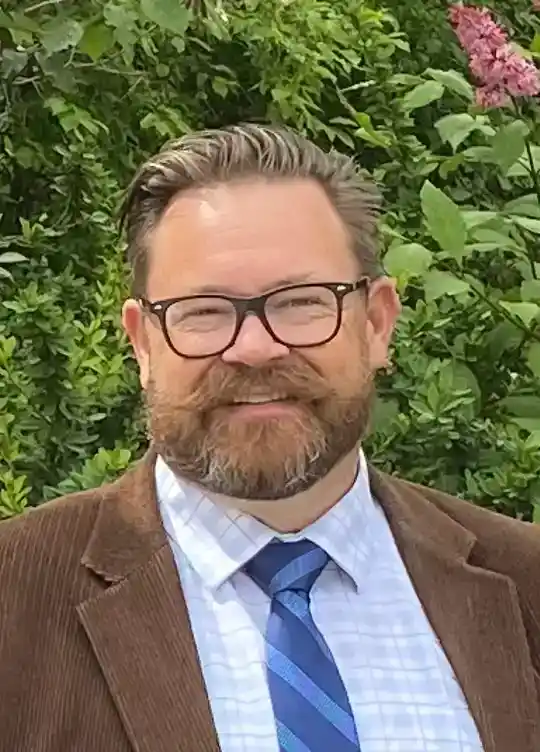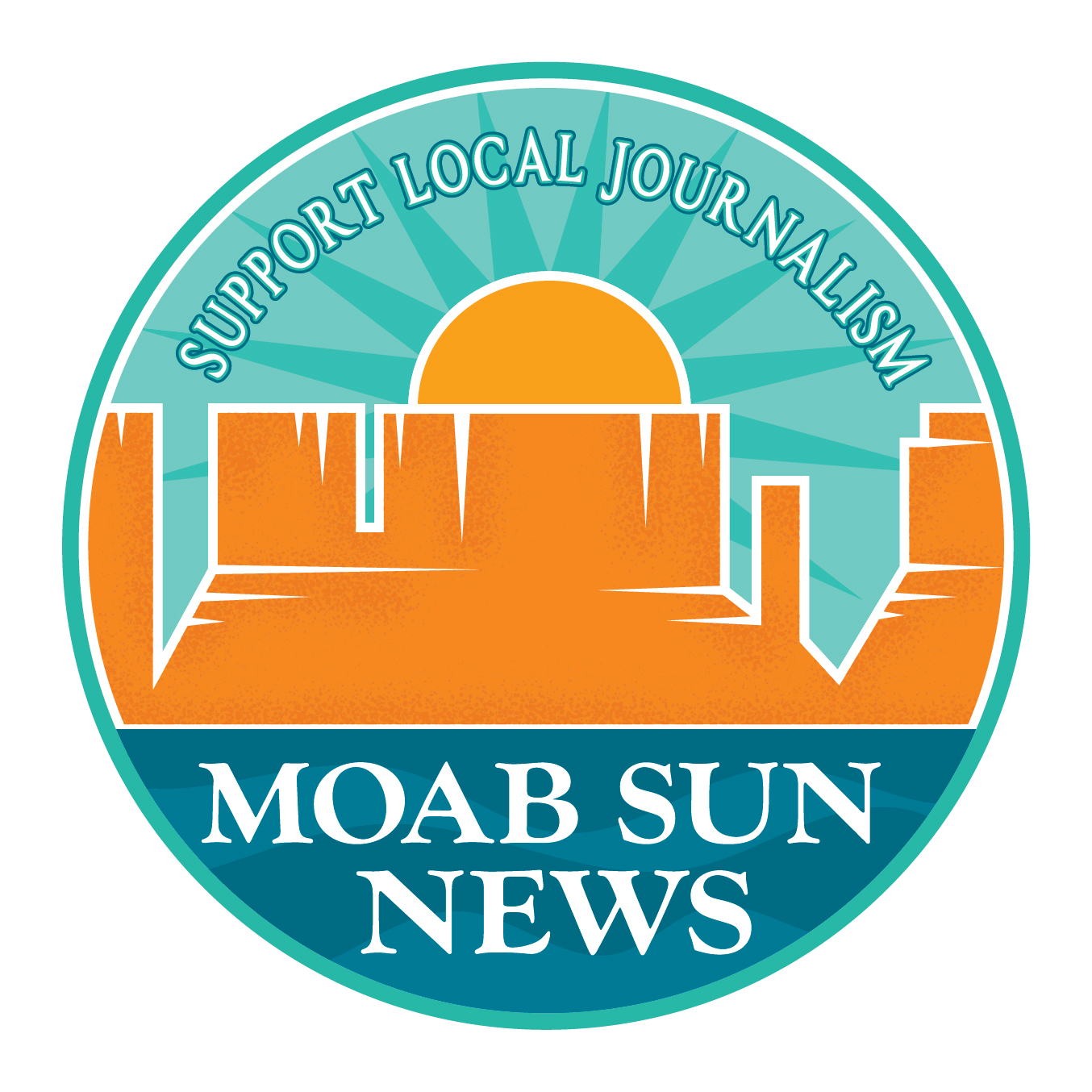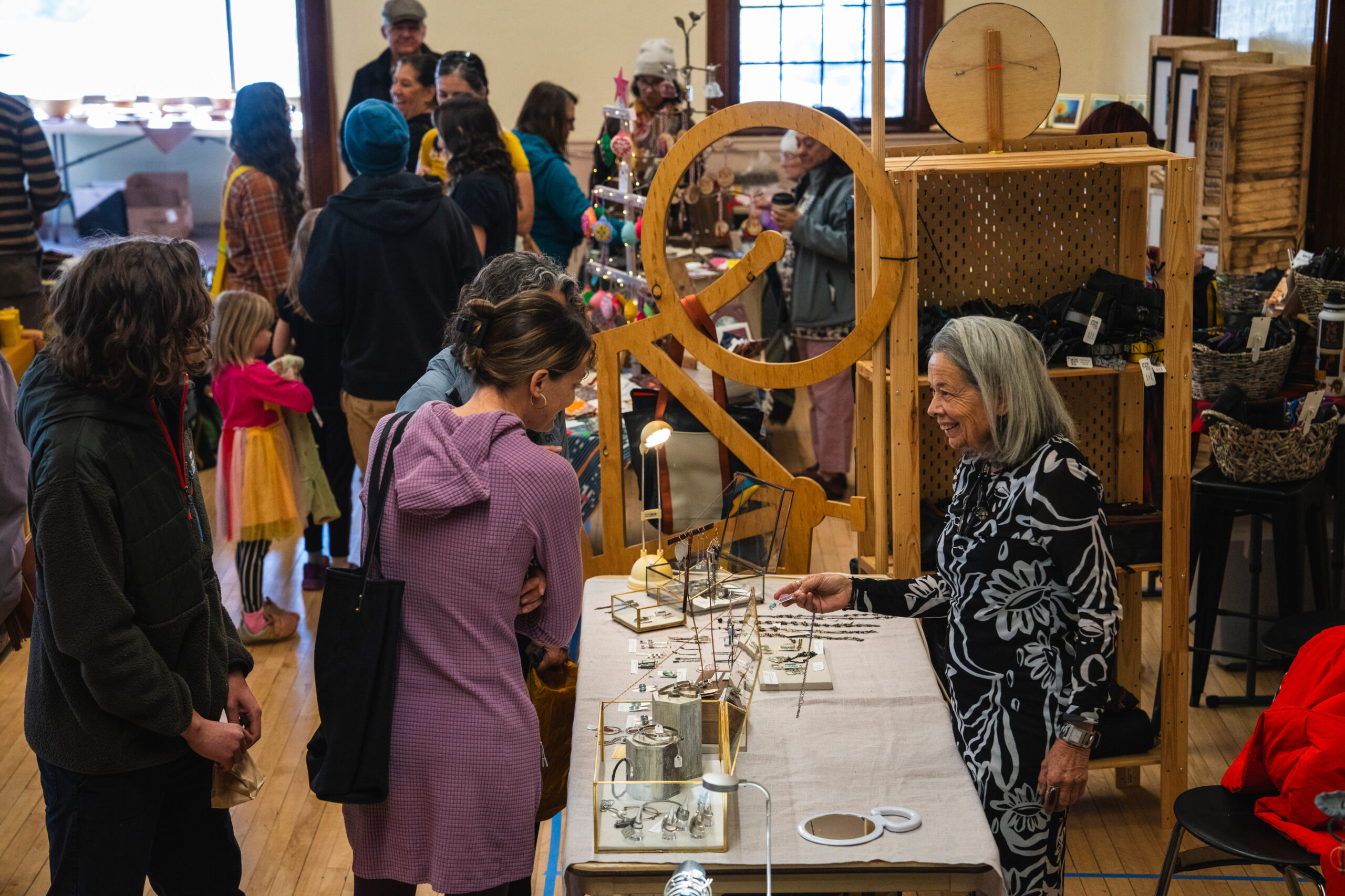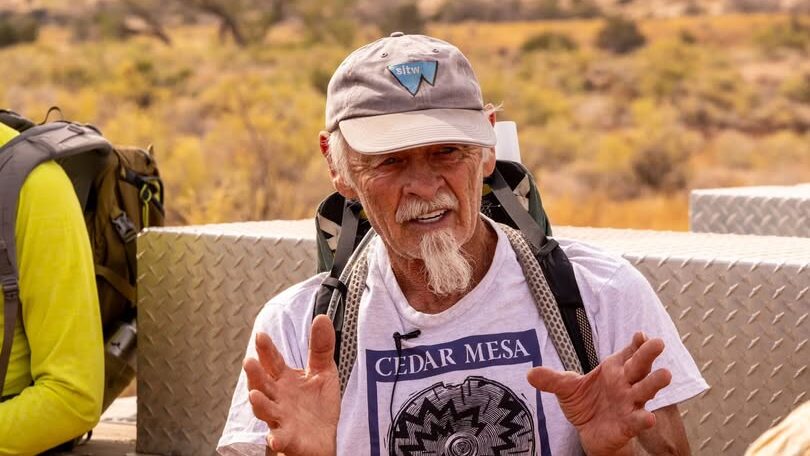Some information may be outdated.
It’s been just a few weeks since Michael Black took on the role of city manager for Moab, transitioning from the position of community development director. In a conversation with the Moab Sun News, Black discussed his new job—he’ll stay connected to some of the projects he’s been working on, while passing some responsibilities off to other staff—as well as the city’s main priorities right now, including disaster resilience and housing stock.

This interview has been edited for length and clarity.
Moab Sun News: What does this transition look like—what are some things you’re stepping away from, and what are some new responsibilities you’re taking on?
Black: With community development, I oversaw planning and building, engineering, sustainability and housing—I’ll still be doing some of that stuff. Cory Shurtleff [current Moab City Planning and Zoning Administrator] is going to be stepping up and taking some more responsibility there. We’re not going to refill the Community Development position just yet; Cory will come up into what will be similar to what I was doing. We’ll still work really closely together.
I think every city manager should have some community development responsibility. I think it’s a good fit, it’s a good transition, and it’s a good background for me to get in there and really still be involved as city manager.
There’s a lot of day-to-day involved with community development where people have questions, they have concerns, they’re trying to figure out how to get from point A to point B and sometimes it’s not always that clear. I always saw myself as kind of the problem-solver… That’s what Cory will be doing. In large part, Cory’s going to step in with housing as well. But there’s a couple of project-type things, like Walnut Lane, that I’ll probably still be working on. I’d like to see that through.
MSN: What’s the status of Walnut Lane?
[Walnut Lane is a mobile home park that Moab City purchased in 2018 with the intention of building new, quality affordable housing. The project has hit multiple roadblocks and the new housing has not yet been built. Earlier this year, residents received notice that they would have to leave the property because the city’s gap insurance provider ended its coverage of the homes, many of which were in poor condition.]
Black: I think it makes sense for us to really consider everything, to not move too fast on that because we’ve tried it twice now and it hasn’t worked out.
Unfortunately, we did have to clear the property. That was unfortunate, but it was also necessary because the condition of everything,
We want to just make sure we know what we’re doing, that the Council feels good that it’s going to be in the best interest of the public, and that it’s going to serve the purposes that they purchased it for, which is to support affordable housing.
The reason why the last one fell apart is because we couldn’t get to the point with the developer where the Council felt like it was affordable enough—that the new stuff was going to be affordable enough for it to actually be a benefit to people.
So I’ll stay involved in that, see how we’re going to move that forward, what that’s going to look like. We don’t have the game plan just yet, but I think it’s good to take a little bit of a break to make sure that we don’t try and follow up too quickly and end up in the same kind of situation.
The Council does want to talk about it, they are going to be talking about it in the next few months, and trying to come up with the direction that they want to see on that.
MSN: What are the city’s priorities right now?
Black: Disaster response and recovery and community resilience is probably the biggest priority. We’ve not been lucky this year—we’ve been hit a few times. With changing climate and weather patterns, we’re just going to keep on dealing with it. In my interview process, I told [the Council] that I felt like the Council needs to adopt another pillar for the Strategic Plan, and that pillar should be community resilience to natural disasters.
[Natural disasters are] going to happen, but can we mitigate what the impacts are? In some cases you can’t, but you can do what you know—for instance, we understand how earthquakes affect buildings, and where floods are going to go. If you’re in a flood plain, we know we need to build up higher so that when your property floods, it doesn’t get into your house.
But with changing weather and everything—did Asheville ever think they were going to get hit by a hurricane? So we need to focus on all of those things—response, recovery and mitigation—because the mitigation might be there, but the thing may happen different than we expected, because of the way the weather has changed.
MSN: Are flood maps being updated?
Black: Yeah, there’s a statewide project going on; Bowen Collins was hired by the state to take a look at all the flood zones.
The state has [also] agreed to pay for flying Lidar, where they fly over and they can get really, super-accurate topography and we compare that with what it was [when the data was last collected], and that will help influence the flood mapping as well.
We don’t get to control how much it rains or when it rains and things like that, but we can mitigate, and since the town is already here, that’s what we need to do—we can’t move the town.
MSN: Are there specific strategies the city is considering to mitigate flooding?
Black: It’s too early to get into what proposals there are—there’s these ideas out there that haven’t been investigated enough to make them into proposals. Catchment basins is one of them, berming is one of them. People say ‘dredging’ a lot, and I don’t like the term dredging, because dredging sounds like you’re just going to go and make the creek deeper. But really, in order to increase the capacity—and that’s what they’re talking about, increasing the capacity of the creek—you have to [widen the creek from side to side] too. And then you have to probably build up the sides as well because we’re dealing with elevations—the elevation of the river has to be lower than then the elevation through town in order for the water to get to the river.
That’s one of the options, and doing concrete through town on the base of the creek as well is an option. Removing some vegetation is necessary. There’s lots of different things and we’re going to, probably, have a menu and be like, ‘We’re going to do a little of this, a little of this, we’re going to do this in this area and that and that area.’
One thing I should say is that as we’re looking at this, we’re looking at a system, and it’s a dynamic system, and anything you do here could affect everywhere. You can’t just address one area without affecting all of the areas. So it’s going to be a big project.
Some of the things I can tell you that we’re focusing on and we have plans for moving forward on: Third South bridge. We will be redesigning that bridge with the idea to replace it. We have a designer on board, and we’re actually getting the contract approved for the design. We’ve split up the creek into different areas, just so there’s a manageable area, so we can do studies on this area and then we’ll link to the study we’re doing in [other areas of the creek corridor].
In 2022, the former engineer and city manager put into play a lot of planning based on that flood. I know it seems like a long time, but a few months ago we were starting to get the plans for those, and we’re actually building those things now. So, like Fifth West bridge, which is an issue, that one is being armored and riprap is being put in and we’re removing a lot of sediment from that area to increase the flow of the channel and the capacity under the bridge. That’s happening now—but it took a year and a half for the engineers to get the plans together and everything we needed to go to bid, and now it’s just barely started. So it seems like a long time, but that’s just kind of how long it takes. We’re also doing gabion baskets in several places along the river to protect the areas where it’s scouring. We’ve got engineers working on designs for the areas where we lost sidewalk. But… you can’t just go put a sidewalk back. We have to build the structure back up to protect against scour on that curve, and then build that up, and then build the sidewalk on top of that.
We’re looking at all of our pedestrian pathways and how vulnerable they are, and also if they’re designed appropriately to actually handle the levels of the flood that we’re expecting to see.
So there’s a lot going on. We’re constantly meeting about all of this… things are moving, we’re trying to stay on top of this and keep moving as fast as we can. We’re all in this together. We can empathize with everybody who’s been affected by the floods, because we’ve been affected by the floods as well. We all want the same thing. We all want to be resilient, to be able to recover.
MSN: Are there other natural disasters the city is working to build resilience against?
Black: We’re focusing on flooding; obviously fire is a big issue as well. We are partnered with a nonprofit [Rim to Rim Restoration] and the fire department and working on fuels reduction.
We’re focusing mainly on [flooding and fire] because they’re imminent threats. We’ve seen a lot of fires in the West over the last 10, 20 years. It just keeps getting worse and worse.
So we’re we’re looking at our vulnerabilities with Kara [Kara Dohrenwend, director of Rim to Rim Restoration] and saying, ‘Okay, wildfire is one thing, but we have this [wildland/urban] interface, and how do we keep that interface from the town getting burned? And how do we manage that interface?’ And then when you have these creek channels, these natural corridors that run through town, you also end up with all these invasive species that can bring fire right into the town. So [Dohrenwend is] on top of that, the fire department’s working really heavily with that, and we’re partners. We will get some work done from that; we may even get some staffing where we have staff in Public Works who are doing fuels reduction on a day-to-day basis.
MSN: What are some other priorities the city is working on?
Black: Housing continues to be a priority—we definitely are not where we want to be with housing. We know how many units we need in order to meet the housing demand, thanks to work that we’ve done with the Moab Area Housing Task Force. So we’ve got this plan—it’s a great plan, there’s a lot of data… now we need to build it. As a city, we don’t really build—you saw what happened with Walnut Lane. It’s not really in our wheelhouse. Housing is a difficult thing for cities to do—it’s really hard. And we don’t mind admitting that there are agencies that do it way, way better than us, like the Housing Authority of Southeastern Utah and the housing trust [Moab Area Community Land Trust -ed.]. So we’re looking at that from, ‘How can we support private developers, public developers, people who are providing the housing. How do we get them to the point where they’re actually building houses?’ And we have hundreds and hundreds of units that are permitted, that haven’t been built yet. I met with a developer this week who wants to buy part of the Aggie Village plans for apartments that were already approved up there that haven’t been built. [Aggie Village is a proposed housing development near the Utah State University Moab campus. -ed.] We’re trying to relate to them, ‘Yes, please. We want you to build these,’ because they’re going to be rentals. And that’s what we need, is rentals—they’ll be more responsive to the local market, as far as affordability goes, than condos.
If we can get all of the units that we have permitted, built, we could make a huge dent in our housing.
It’s a hard time for developers because of finance costs. But with the Fed just announcing that interest rates are coming down more, we’re seeing more developers kind of getting geared up and ready to go.
There’s a lot of planning going on too. Parking is an issue—even with all these new parking spots, they’re already full. The pedestrian experience downtown is another really big issue, and we’re working towards plans that will make that a much better experience and safer experience for people. Safe is a big thing, but also the aesthetic and how it feels and how it functions and how it looks. A lot of cities are moving away from parking requirements and things like that. But, how do you get to Moab? You’ve got to drive. And a lot of people who are coming to Moab are in more than one car, because they bring an OHV on a trailer, and there’s RVs. Parking is going to be a big part of our city for a long time. There’s lots of things we can do, like providing transit, which we’re doing.
MSN: Anything else you want to mention?
I’m just excited and honored to be able to do this. My goal is to be a service in the community. That includes service to the people in this building and our employees the work that they do. They’re the ones who do the work that everyone notices, and my goal and hope is to provide them with the things that they need so that the public, in turn, gets the services that they’re used to and maybe even enhance those services. We want to be responsive to people, and look forward to getting more involved with the community.
Appreciate the coverage? Help keep local news alive.
Chip in to support the Moab Sun News.




